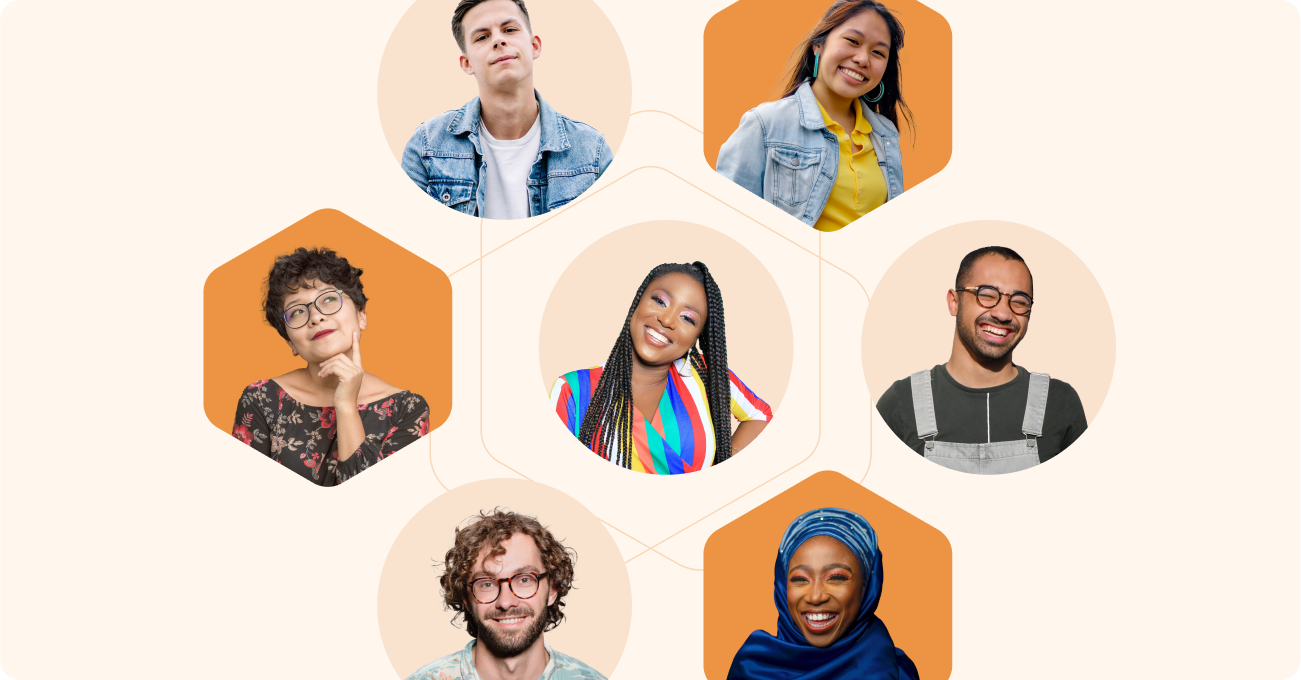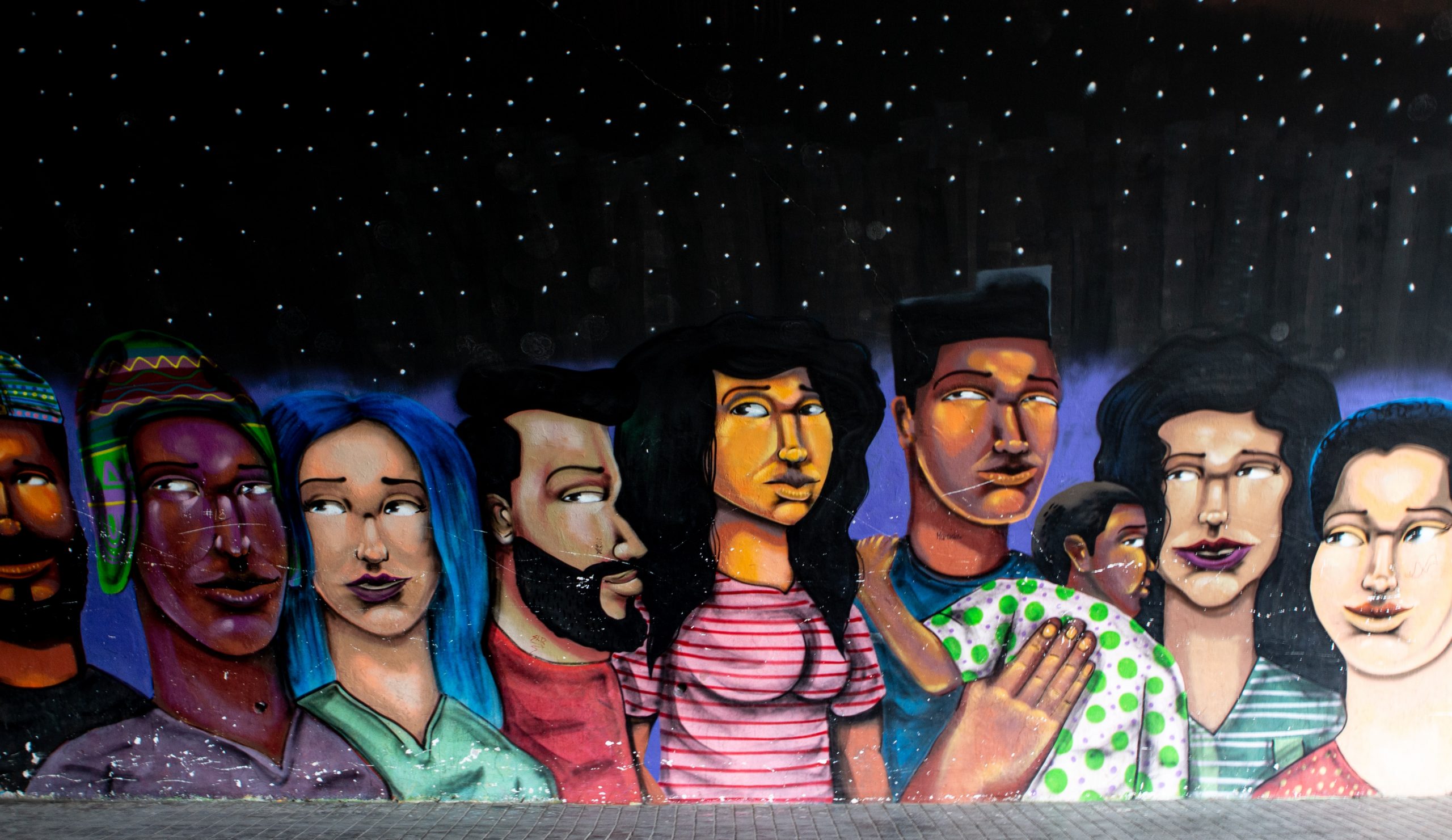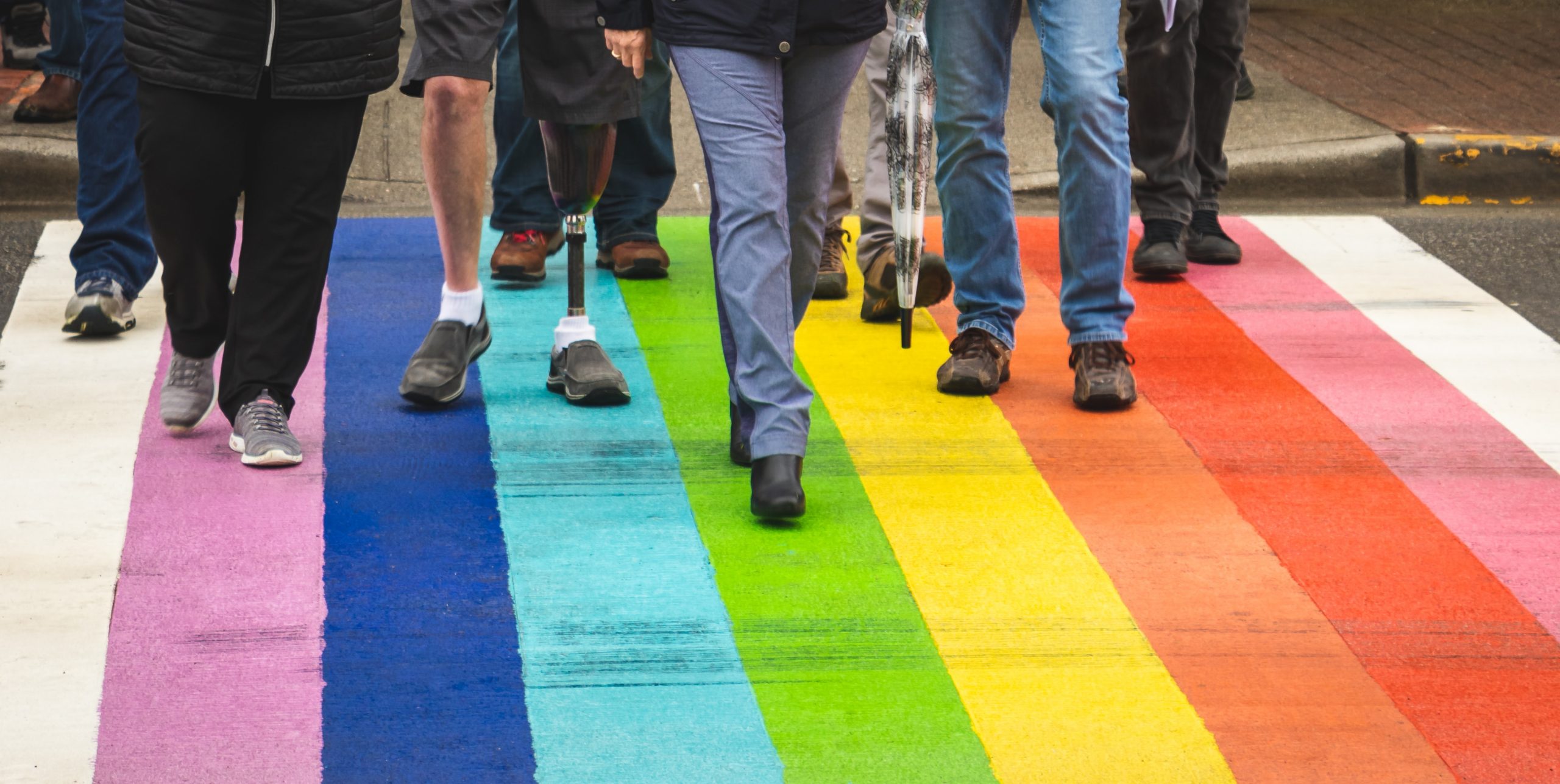What is diversity?

Diversity and inclusion are big topics. When we shrink them down into acronyms (DEI, D&I, EDI), we can lose sight of what each term actually means. So let’s go back to basics. In this post, we explain exactly what people are talking about when they talk about diversity, and why it’s so important to take it seriously.
Defining diversity
Diversity is about people. This includes their different backgrounds, identities, perspectives and their unique experiences. When all the social groups that make up society are fairly represented across every level of your company, then your organisation is diverse.
The D&I conversation usually focuses on groups like women and people of colour, and this makes sense — these groups are severely underrepresented in tech and at senior professional levels.
But true diversity also encompasses invisible characteristics — religion, sexuality, disability and neurodiversity for example. These identities might not be obvious when first meeting someone, but they also shape our experiences at work and beyond.

Did you know? UK tech has a long way to go before it can boast a gender balance. According to the Tech Nation Report 2021, women account for just 25.5% of tech workers and 22% of tech directors.
There’s also a dearth of ethnic diversity at the top of the ladder. BCS reports that only 11% of IT directors are from ethnic minority backgrounds.
Why is diversity important?
It’s tough to argue against the business case for diversity. The research speaks for itself — diverse teams are more creative, more innovative, and make better decisions. Here’s a snapshot of the benefits of diverse and inclusive teams:
- Gender and ethnically diverse companies are 20-35% more financially successful than their competition.
- Diverse leadership boosts innovation — companies with diverse leadership teams report 45% average innovation revenue, compared to 26% for less diverse teams.
- Diverse teams, in both social characteristics and experience, are more creative and successful. The researchers captured metrics like risk-taking, innovation and market growth across 40 companies and found that those with diverse teams are 90% more likely to take risks, 72% more likely to challenge the status quo, and 70% more likely to report that they captured a new market in the previous year.
If your team is mostly homogenous, then you’re missing out on all of the potential of a diverse team. Adding new perspectives and experiences to your team will help you fill in your blind spots and tap into new ideas.
Beyond the business benefits of D&I though, embracing diversity is the right thing to do. No one should face additional barriers in the world of work just because of their background or identity. At Fair HQ, we’re all about shifting the status quo with powerful interventions to create a more equitable workplace.
The opportunities afforded to people should be based on objective merits. This way, we can make the workplace fairer and ensure that the best fit for the role always gets the job, no matter where they come from or what they look like. That’s the kind of world we want to live in.
How do I create a diverse organisation?
How to overcome bias
Our society isn’t meritocratic, yet. Some groups of people have to cross extra hurdles to reach the same heights as their peers, even with the same qualifications and skills under their belts.
To welcome diversity, we need to break down these barriers. You’ll need hiring and promotion practices that cut out bias if you want to see a fair representation of different groups across your organisation.
Everyone has bias. It’s hardwired into our brains, and it’s incredibly hard to train someone out of. A much more effective approach is setting up equitable structures where candidates are judged based on skill and aptitude, not who they know or what they look like.
Having objective criteria to guide decisions closes the door to ambiguity and bias. This empowers everyone to get ahead, no matter their background.
How screening CVs introduces bias
Even a name can be enough to set our internal heuristics ablaze. Let’s take CVs as an example. When we review candidates’ personal details, we start to judge them on totally irrelevant information before we’ve even met them.
One way to circumvent this bias is to cut out CVs from the hiring process altogether. We’ll soon be releasing our blog series on fair hiring, including the best way to screen candidates fairly. Stay tuned.
Bias is deeply engrained into the recruitment process, and we need to take care to weed it out. One famous study by behavioural scientists at Chicago Booth School of Business showed the extent of discrimination in the CV screening process.
They assigned identical resumes the name ‘Emily Walsh’ or ‘Lakisha Washington’. Despite having the exact same qualifications and experience, CVs assigned the ‘white-sounding’ name received 50% more callbacks than Lakisha Washington.
How to reach a diverse pool of candidates
To expand your reach when recruiting, you’ll also need to cast a wide net. Organisations typically fall into the trap of tapping into the same networks when a role opens up. This means they end up replicating the homogeneity on their team — again and again, they end up hiring people like them.
There are plenty of ways to broaden your reach. For example, by posting on a variety of job boards, setting up a diverse referral programme, or even just changing the wording in your job ads.
Maybe you’re thinking this sounds like a big ask, especially for niche, hard-to-fill roles. It’s true that there are no quick fixes when it comes to improving diversity. But there are plenty of small changes you can make that add up to huge transformations.
Expanding your reach to encompass more diverse candidates doesn’t mean lowering the standards. On the contrary! It means tapping into networks you wouldn’t normally have access to and reaching the best talent out there.
Soon, you’ll be able to read about plenty of small yet meaningful interventions in our series, ‘How we hire fairly at Fair HQ‘. We tried them all out for you, and we promise the effort was worth it.
How do I measure diversity?
To understand how you fare in terms of diversity, you’ll need to track the data and compare your company makeup against your peers. We’ve dedicated an entire guide to benchmarking diversity — comparing your company makeup against the representation in your local community and industry will give you the best sense of what to aim for.
Once you understand the ins and outs of your company makeup and how you compare to others, you’ll be able to identify areas for improvement. Tracking diversity data will also help you measure the impact of initiatives and focus your attention on measures that really move the dial.

We’ll underline it because it’s such a key message: diversity and inclusion isn’t only about representation. It’s important that individuals belonging to underrepresented groups are supported in every aspect of their work life. Otherwise, employees can become disillusioned and leave — 39% of employees reported they would leave their current employer for a more inclusive one.
To foster a work environment where everyone feels like they belong, you’ll need to build a sense of inclusion. In fact, you really can’t have one without the other.
Read our next post in the series to find out what inclusion is, and why it’s crucial for a successful business.
Backing it up
Bertrand, M. & Mullainathan, S. (2004) ‘Are Emily and Greg More Employable Than Lakisha and Jamal? A Field Experiment on Labor Market Discrimination’ American Economic Review 94:4
Deutsch, W. (2019) ‘Innovation: What’s diversity got to do with it?‘ Chicago Booth Review
Harver (2020) ‘The state of diversity recruiting in 2020 and beyond‘
Hired (2021) ‘The UK Tech Workplace Equality Report‘
Tech Nation (2021) ‘Diversity and inclusion in UK tech companies‘